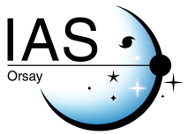SPITZER MID-IR SPECTROSCOPY OF POWERFUL 2 JY AND 3CRR RADIO GALAXIES. I. EVIDENCE AGAINST A STRONG STARBURST-AGN CONNECTION IN RADIO-LOUD AGN
| Title | SPITZER MID-IR SPECTROSCOPY OF POWERFUL 2 JY AND 3CRR RADIO GALAXIES. I. EVIDENCE AGAINST A STRONG STARBURST-AGN CONNECTION IN RADIO-LOUD AGN |
| Publication Type | Journal Article |
| Year of Publication | 2012 |
| Authors | Dicken, D, Tadhunter, C, Axon, D, Morganti, R, Robinson, A, Kouwenhoven, MBN, Spoon, H, Kharb, P, Inskip, KJ, Holt, J, Almeida, CR, Nesvadba, NPH |
| Journal | Astrophysical Journal |
| Volume | 745 |
| Date Published | Feb |
| ISBN Number | 0004-637X |
| Accession Number | WOS:000300326800070 |
| Abstract | We present deep Spitzer/Infrared Spectrograph (IRS) spectra for complete samples of 46 2 Jy radio galaxies (0.05 < z < 0.7) and 19 3CRR FRII radio galaxies (z < 0.1), and use the detection of polycyclic aromatic hydrocarbon (PAH) features to examine the incidence of contemporaneous star formation and radio-loud active galactic nucleus (AGN) activity. Our analysis reveals PAH features in only aminority (30%) of the objects with good IRS spectra. Using the wealth of complementary data available for the 2 Jy and 3CRR samples we make detailed comparisons between a range of star formation diagnostics: optical continuum spectroscopy, mid-to far-IR (MFIR) color, far-IR excess and PAH detection. There is good agreement between the various diagnostic techniques: most candidates identified to have star formation activity on the basis of PAH detection are also identified using at least two of the other techniques. We find that only 35% of the combined 2 Jy and 3CRR sample show evidence for recent star formation activity (RSFA) at optical and/or MFIR wavelengths. This result argues strongly against the idea of a close link between starburst and powerful radio-loud AGN activity, reinforcing the view that, although a large fraction of powerful radio galaxies may be triggered in galaxy interactions, only a minority are triggered at the peaks of star formation activity in major, gas-rich mergers. However, we find that compact radio sources (D < 15 kpc) show a significantly higher incidence of RSFA (>75%) than their more extended counterparts (approximate to 15%-25%). We discuss this result in the context of a possible bias toward the selection of compact radio sources triggered in gas-rich environments. |



